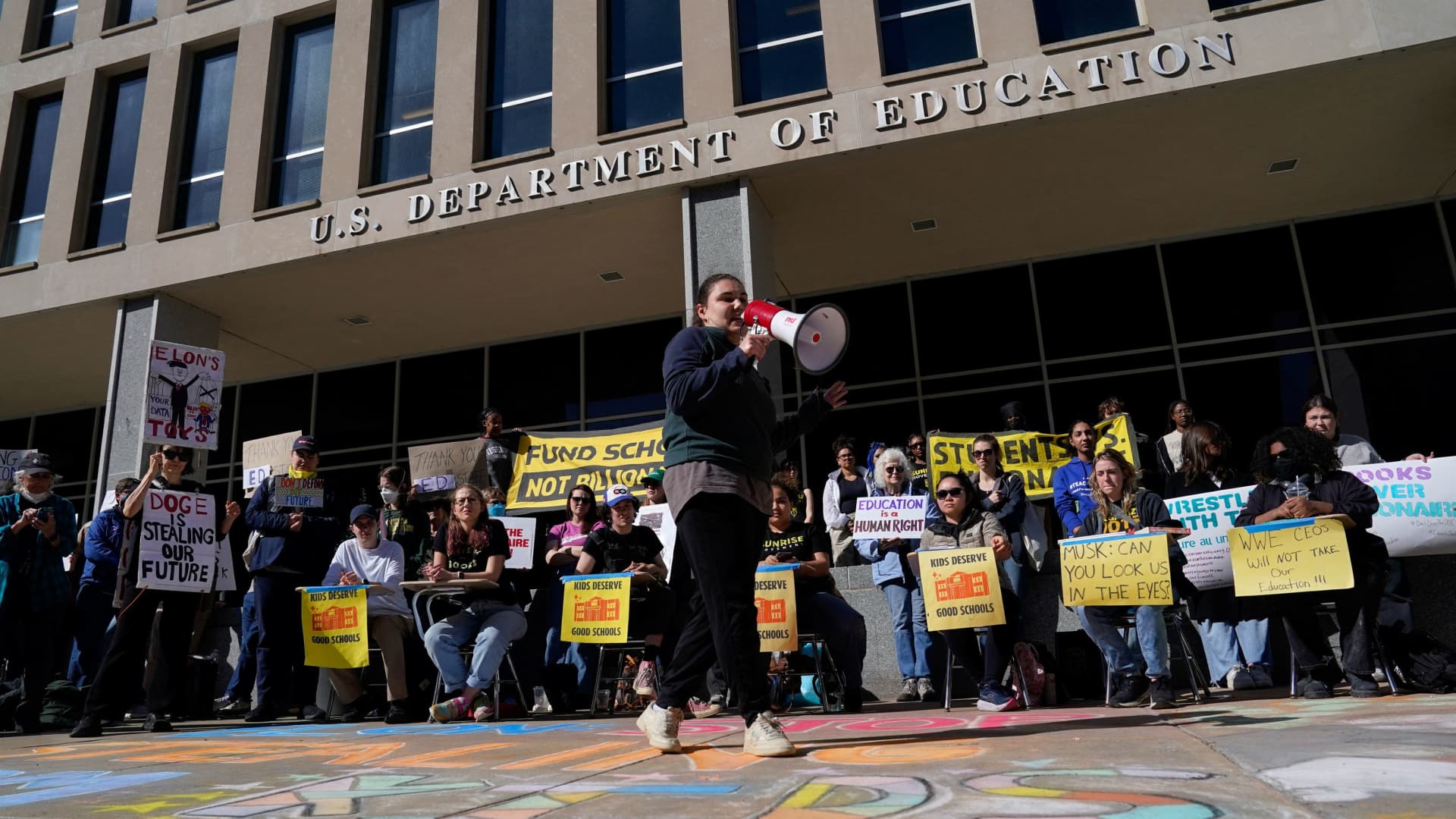Djelics | E+ | Getty Images
Retirees can expect to see some big changes in 2025 when it comes to their Social Security and Medicare benefits.
President Joe Biden is expected to sign a bill that will increase Social Security benefits for certain pensioners. Additionally, the annual Social Security cost-of-living adjustment goes into effect for all beneficiaries.
And Medicare enrollees who are worried about health-care costs now have a $2,000 annual out-of-pocket Part D prescription drug cap aimed at helping to reduce those financial pressures.
Here are some important changes to note for the coming year.
Some pensioners could get benefit increase
The Senate passed a bill in the final legislative days of 2024 to boost Social Security payments for millions of people who receive pensions from work in federal, state and local government, or in public service jobs such as teachers, firefighters and police officers. The House had passed the bill in November.
Now, Biden is expected to sign the bill into law in the coming days.
The Social Security Fairness Act eliminates two provisions that reduce Social Security benefits for certain individuals who also have pension income from public work where Social Security payroll taxes were not paid.
That includes the Windfall Elimination Provision, or WEP, which reduces Social Security benefits for individuals who also receive pension or disability benefits from employers who did not withhold Social Security taxes.
More from Personal Finance:
Senate passes Social Security benefits increase for some public workers
73% of workers worry Social Security won’t be able to pay benefits
Early retirement is a surprise for many workers, study finds
It also includes the Government Pension Offset, or GPO, which reduces Social Security benefits for spouses, widows and widowers who receive their own government pensions.
Together, the rules affect around 2.5 million beneficiaries, according to the Congressional Research Service. Once enacted, the law may provide higher benefit payments to those individuals.
Notably, it may provide retroactive payments of those benefit increases for the months after December 2023.
The legislation marks the biggest change to Social Security since certain couples claiming strategies were phased out in 2016, said Martha Shedden, president of the National Association of Registered Social Security Analysts.
“We’re sort of in limbo as to how that process will proceed, when people will see that increase and how the retroactive [benefits] will be applied,” Shedden said.
All Social Security beneficiaries to get 2.5% COLA
In 2025, all beneficiaries will see a 2.5% increase to their Social Security benefit checks, thanks to an annual cost-of-living adjustment.
Of note, the 2024 increase was 3.2%. This year’s COLA is the lowest increase beneficiaries have seen since a 1.3% increase in 2021, reflecting a decrease in the pace of inflation.
The change will be effective with January checks for more than 72.5 million Americans, including Supplemental Security Income beneficiaries.
The average worker retirement benefit will be $1,976 per month, up from $1,927 in 2024, according to the Social Security Administration.
Monthly Medicare Part B premiums go up
Monthly Medicare Part B premiums — which are often deducted directly from Social Security checks — may affect just how much of a bump beneficiaries see in their 2025 benefit payments.
Medicare Part B covers physician, outpatient hospital and certain home health services, as well as durable medical equipment.
In 2025, the standard monthly Part B premium will be $185 per month — a $10.30 increase from $174.70 in 2024.
Part B deductibles will also rise, to $257, in 2025 — a $17 increase from the $240 annual deductible for 2024.
Medicare Part B premiums are based on a beneficiary’s modified adjusted gross income, or MAGI, from their tax returns from two years prior. In 2025, beneficiaries who had less than or equal to $106,000 in MAGI in 2023 will pay the standard monthly Part B premium, as will married couples with less than or equal to $212,000.
Beneficiaries with higher incomes will be subject to income-related adjustment amounts, or IRMAA, that increase their monthly premium payments.
Medicare $2,000 prescription drug cap goes into effect
Annual out-of-pocket Medicare Part D drug costs will now be capped at $2,000, as changes enacted with the Inflation Reduction Act go into effect.
Beneficiaries with Medicare Part D drug plans that have a deductible will pay out-of-pocket costs until that threshold is met. In 2025, the highest deductible for those plans is $590.
Once beneficiaries pay their full deductible, they will owe 25% of the cost of coinsurance until their out-of-pocket spending on both generic and brand-name drugs reaches $2,000. After that, those beneficiaries will have what’s known as catastrophic coverage, which means they won’t be on the hook to pay out-of-pocket Part D costs for the rest of 2025.
However, beneficiaries will also have the option to pay out-of-pocket costs monthly over the course of the year, instead of all at once.
Notably, insulin costs have also been capped at $35 per month, both under Medicare Part D covered treatments and Medicare Part B covered insulin used with pumps.
Social Security trust fund depletion dates get closer
In 2024, the Social Security trustees projected the trust fund the program relies on to help pay retirement benefits may be depleted in 2033. At that time, just 79% of those benefits may be payable, unless Congress acts sooner.
Social Security’s combined trust funds — used to pay both retirement and disability benefits — are projected to run out in 2035.
Now that the calendar has turned to a new year, those depletion dates are closer.
Notably, the previously mentioned Social Security Fairness Act that will provide increased benefits to some pensioners may move the trust fund depletion date six months closer.
“That’s the major looming issue right now, is what can be done to shore up those trust funds,” Shedden said. “That’s going to require very comprehensive, bipartisan changes to multiple parts of the Social Security rules in the program.”
However, most financial advisors emphasize that shouldn’t affect personal claiming decisions.
For younger generations, there could be changes to future benefits, said George Gagliardi, a certified financial planner and founder of Coromandel Wealth Strategies in Lexington, Massachusetts.
“But for those already receiving or about to get Social Security checks, I don’t think that there is anything to worry about,” Gagliardi said.
Other important changes to note
- Maximum taxable earnings — the amount of wages subject to Social Security payroll taxes — will rise to $176,100 in 2025, up from $168,600 in 2024. Once workers hit that cap, they no longer pay into the program for the rest of the year.
- Social Security beneficiaries who claim benefits before their full retirement age and who continue to work face what is known as a retirement earnings test. The earnings exempt from the retirement earnings test is now $23,400 per year in 2025 for those under full retirement age, up from $22,320 per year in 2024. For every $2 in earnings above the limit, $1 in benefits is withheld. For the year an individual reaches retirement age, a higher threshold of $62,160 in earnings applies, up from $59,520 in 2024. For every $3 in earnings above the limit, $1 in benefits is withheld. Of note: this only applies to the months before a beneficiary turns full retirement age. Starting from their birthday month, the retirement earnings test no longer applies. Importantly, once a beneficiary reaches full retirement age, any previously withheld benefits are applied to monthly benefits.
- Do you want to talk to the Social Security Administration face to face? Starting Jan. 6, the agency is requiring appointments for local office services, such as obtaining Social Security cards. To improve efficiency, the agency is directing individuals who need help to first try its online or automated telephone services. However, people who are unable to schedule in-person appointments, particularly vulnerable individuals, may still come in and get in-person service.


 Blog Post1 week ago
Blog Post1 week ago
 Economics1 week ago
Economics1 week ago
 Finance1 week ago
Finance1 week ago
 Economics1 week ago
Economics1 week ago
 Economics1 week ago
Economics1 week ago
 Personal Finance1 week ago
Personal Finance1 week ago
 Accounting1 week ago
Accounting1 week ago
 Economics1 week ago
Economics1 week ago











